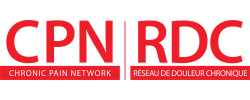| Return |
Patient Evidence Summary

Doctor, I have fibromyalgia. Are there treatments that don't require taking medications?
There are multiple non-drug treatments for fibromyalgia. Some treatments may be better than others at improving specific symptoms (e.g., pain, fatigue, sleep, depression). Exercise seems to improve all of these symptoms to different degrees.
What is the evidence?
SUMMARY OF FINDINGS
Non-drug treatments vs usual care, waiting list, no treatment, or placebo
Treatments* | Effect on Symptoms** | |||
|---|---|---|---|---|
| Pain | Fatigue | Sleep | Depression | |
Exercise - aerobic, mind-body, and strengthening (28 studies; 1,487 people) | large improvement | large improvement | large improvement | moderate improvement |
Multidisciplinary treatment^ (10 studies; 1,023 people) | large improvement | no improvement | large improvement | large improvement |
Balneotherapy (immersion in mineral water) (13 studies; 685 people) | large improvement | no improvement | no improvement | moderate improvement |
Acupuncture (8 studies; 518 people) | large improvement | moderate improvement | no improvement | moderate improvement |
*only the main categories of treatments that showed a clinically important improvement are reported here
**quality of the evidence was not reported; the majority of studies did not blind participants or outcome assessors to the intervention (participants would have known which study group they were assigned to which might have affected the results)
^In this review, multidisciplinary treatment means an intervention that included exercise, patient education, and psychological treatment
What kind of study was this?
This was a systematic review of 167 randomized controlled trials published up to September 2017 .
Who? This review included 11,012 people (average age 49 years; 88% women) who had fibromyalgia. People with other musculoskeletal diseases (for example, rheumatoid arthritis), chronic fatigue syndrome, or chronic widespread pain that did not meet the criteria for fibromyalgia were excluded.
What? The reviewers included studies that compared non-drug treatments with usual care/waiting list/no treatment/placebo.
Treatment | vs | Usual care/waiting list/no treatment/placebo |
|---|---|---|
Non-drug treatments included exercise (aerobic, flexibility, mind-body, strengthening), psychological treatment (cognitive behavioral therapy, mindfulness), education, multidisciplinary treatment, balneotherapy (immersion in mineral water), acupuncture, massage, manual therapy, electrotherapy (laser), biofeedback, nutritional supplements, homeopathy (uses tiny amounts of natural substances), magnetotherapy, music, weight loss, cupping therapy, material of cloth (wearing wool shirt or t-shirt with bioceramic solution), cryotherapy, hyperbaric oxygen therapy and topical oil. Treatment durations varied but the average was 12 weeks. | Placebo: A pill/needle/lotion containing an inactive substance that has no effect on the outcome. Sometimes, it is referred to as a "sugar pill." Usual care: typically included advice about staying active and medications |
Why was this research done?
Fibromyalgia is a condition that causes widespread pain lasting for at least 3 months without any apparent inflammation or damage to tissues. People with fibromyalgia often also experience fatigue, depression, and sleep problems. Researchers wanted to know if non-drug treatments would improve the symptoms due to fibromyalgia. The results show that several non-drug treatments improve symptoms to different degrees. Exercise, in particular, seemed to improve all outcomes, but varied by type of exercise. Some concerns about this review include the small size of many of the studies, lack of blinding (people knew which study group they were assigned to which may have influenced the results), and lack of standardization for how treatments were given (they varied from study to study).
This Evidence Summary is based on the following article:
Kundakci B, Kaur J, Goh SL, et al. Efficacy of nonpharmacological interventions for individual features of fibromyalgia: a systematic review and meta-analysis of randomised controlled trials. Pain. 2021 Sep 24. pii: 00006396-900000000-97874. doi: 10.1097/j.pain.0000000000002500. PubMed
Published: Friday, January 14, 2022
Please note that the information contained herein is not to be interpreted as an alternative to medical advice from a professional healthcare provider. If you have any questions about any medical matter, you should consult your professional healthcare providers, and should never delay seeking medical advice, disregard medical advice or discontinue medication based on information provided here.
|
This Evidence Summary was printed from the PAIN+ CPN website on 2025/04/26. To view other Evidence Summaries or to register to receive email notifications about new Evidence Summaries, please visit us at https://www.painpluscpn.ca/Articles/EvidenceSummaries |

|






 , McMaster University
, McMaster University